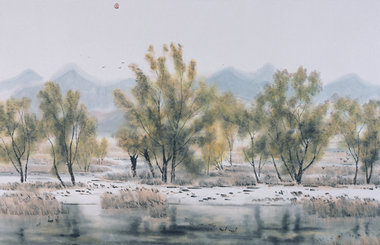In cave graffiti near battle of the somme site, soldiers live on
By Zoe Leroy ( China Daily ) Updated: 2016-05-07 07:41:04
 |
|
A portrait of Stuart Cecil Wade (June 1916) [Photos By Francois Nascimbeni/AFP] |
Another engraving was left by soldier William Joseph Allan Allsop, dated Jan 2, 1917.
Allsop's etching has proved to be crucial in understanding how the caves were used, dispelling the long-established view they were only employed for medical treatment.
Cross referencing the infantryman's carving with his wartime diary, Prilaux was able to establish that he "came with several comrades to the Naours caves".
"When I arrived in 2014, it was said that these underground caves had served as a hospital during World War I, but in fact, soldiers stationed in the area visited the underground tunnels for a break from the tumult of the battlefield," says Prilaux.
"The fighters spent 15 to 20 percent of their time on the frontline and activities were sought to keep them busy during their free time. A visit to Naours was among the proposals offered as a distraction," says Prilaux. "This was a great discovery."
Focus next turned on how to enhance the graffiti's value while ensuring its protection, according to site director Matthieu Beuvin.
He and Prilaux decided to leave all as is and open a small stretch of the tunnel to visitors. Last year, 45,000 people came, 40 percent from English-speaking countries.
"The inscriptions were all inventoried, photographed and a model of the site will soon be online, as will the identity cards of the authors," says Beuvin, meaning even those in Australia "can visit the site".
The site as already moved at least one Australian school group who made a recent "pilgrimage" ahead of Anzac Day, and "half the students ended up in tears", says Beuvin.
Another 3,000 Australians were in nearby Villers-Bretonneax to mark the 98th anniversary of the battle that liberated that town.
The valor shown by Anzac troops has played a role in forging Australian national identity.
A fledgling nation at the outbreak of World War I with fewer than 5 million residents, 416,809 men enlisted and more than 60,000 losing their lives on all fronts, according to the Australian War Memorial.
|
|
|
|
|
|
|
|

























 Raymond Zhou:
Raymond Zhou: Pauline D Loh:
Pauline D Loh: Hot Pot
Hot Pot Eco China
Eco China China Dream
China Dream China Face
China Face






